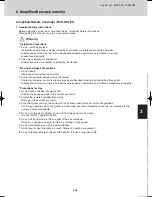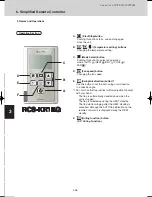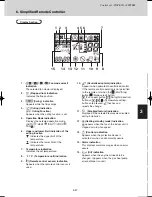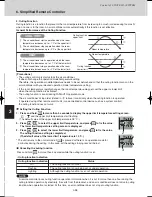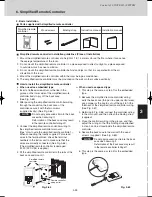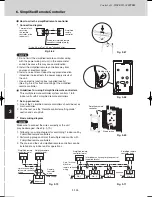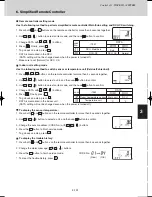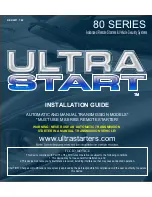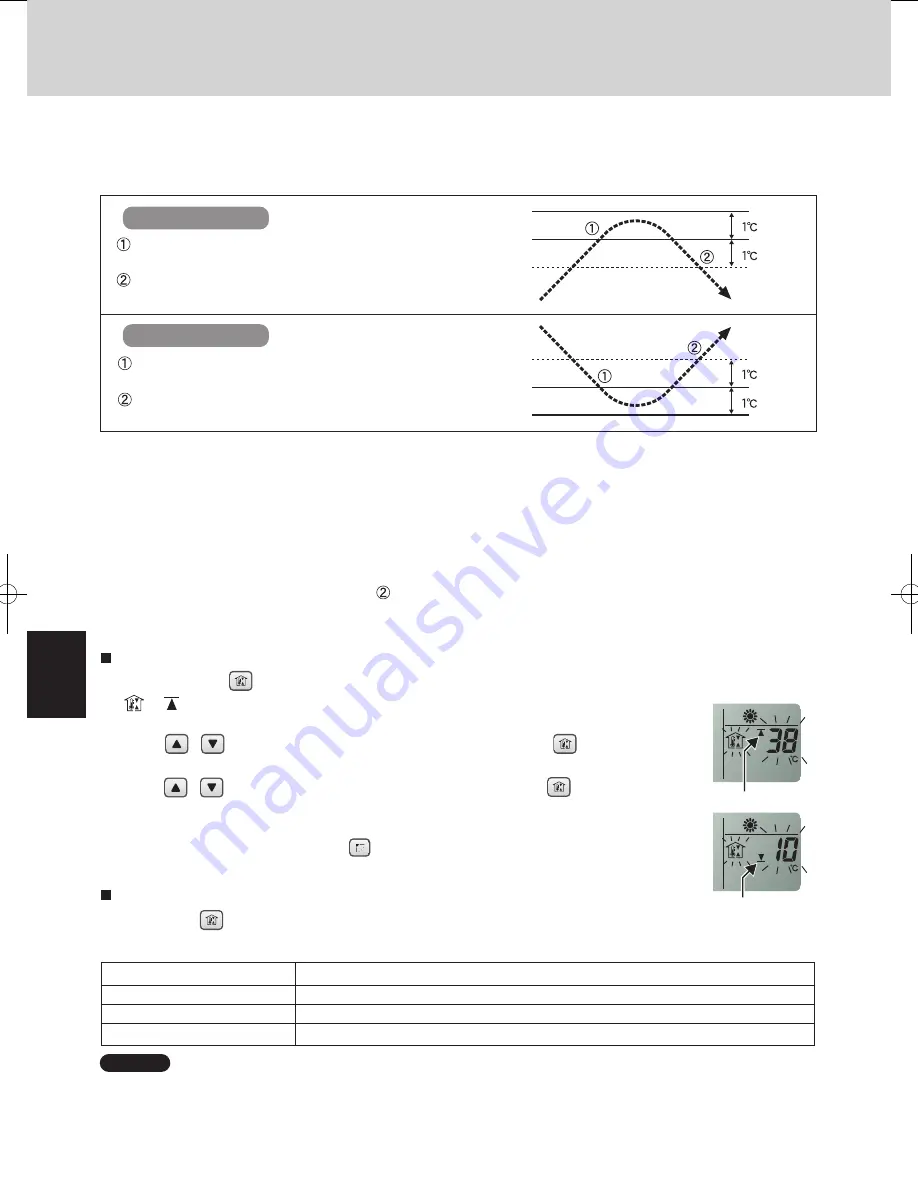
3-98
Control of 3-WAY ECO-i SYSTEM
1
2
3
4
5
6
7
8
6. Simplified Remote Controller
3. Outing Function
Outing function is a function that prevents the room temperature from increasing too much (or decreasing too much)
when no one is in the room. An air conditioner works automatically if this function is set effective.
COOL / DRY
The air conditioner starts operation when the room
temperature increases up to –1°C of the upper limit.
The air conditioner stops operation when the room
temperature decreases up to –2°C of the upper limit.
Room temperature
Outing function
upper limit
HEAT
The air conditioner starts operation when the room
temperature decreases up to +1°C of the lower limit.
The air conditioner stops operation when the room
temperature increases up to +2°C of the lower limit.
Room temperature
Outing function
Lower limit
General Performance of the Outing Function
[Precautions]
•
The outing control only starts/stops the air conditioner.
It does not change the operation mode/temperature setting.
Therefore, the operation mode/temperature needs to be set beforehand so that the outing function turns on the
air conditioner with your desired operation mode/ temperature setting.
•
If the room temperature rapidly changes, the room temperature may get over the upper or lower limit
when the outing function is activated.
•
The outing function is invalid during FAN/AUTO operation mode.
•
The air conditioner's stop order (stated in
/above) is valid only when the outing function is operated.
If operated using other remote control unit (or a centralized control device such as a system control),
the outing function does not work.
Setting the Outing Function
Canceling the outing function
Press and hold
for more than 4 seconds while the outing function is set.
• Outing function indication
Outing function indication
Off
Flashing
Lighting
Status
The outing function is not set.
The outing function is now being set, or under operation.
Although the outing function is set, not under operation.
A remote controller loses outing function operation information when it is cut for more than one hour during the
outing function operation by electricity. It reverts from the blackout, and an air conditioner does not drive in outing
function when operation is started. At this time, an air conditioner does not stop at outing function.
1. Press and hold
for more than 4 seconds to display the upper limit temperature setting screen.
,
and the upper limit temperature start flashing.
(The default value of the upper limit temperature is 38 °C.)
2. Press
/
to select the upper limit temperature, and press
to fix the value.
The lower limit temperature setting screen is displayed.
3. Press
/
to select the lower limit temperature, and press
The outing function setting is completed.
(The default value of the lower limit temperature is 10 °C.)
* The unit returns to the normal mode if
is pressed or there is no operation made for
3 minutes during the setting. In this case, all the settings in progress will be lost.
2
3
to fix the value.
NOTE
TD831143-00_W-3WAY.indb 98
2008/12/05 9:41:41
Summary of Contents for RCS KR1 EG
Page 1: ...3 4 3 ...


